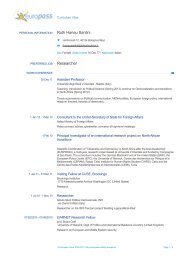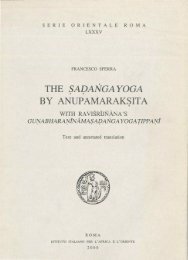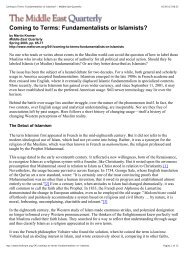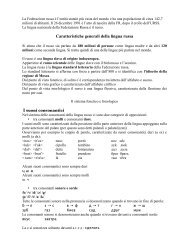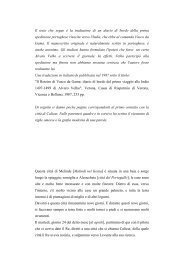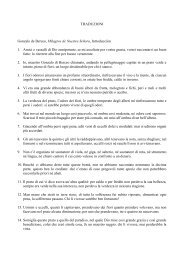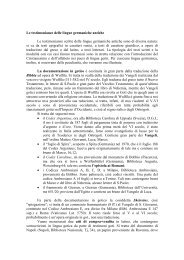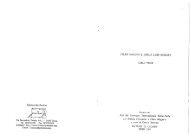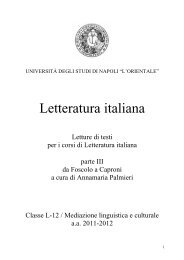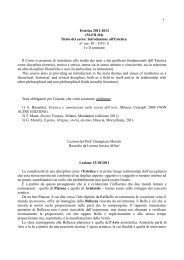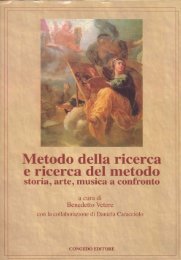INDICA ET TIBETICA Festschrift für Michael Hahn
INDICA ET TIBETICA Festschrift für Michael Hahn
INDICA ET TIBETICA Festschrift für Michael Hahn
Create successful ePaper yourself
Turn your PDF publications into a flip-book with our unique Google optimized e-Paper software.
WIENER STUDIEN ZUR TIB<strong>ET</strong>OLOGIE UND BUDDHISMUSKUNDE<br />
HEFT 66<br />
<strong>INDICA</strong> <strong>ET</strong> TIB<strong>ET</strong>ICA<br />
<strong>Festschrift</strong> <strong>für</strong> <strong>Michael</strong> <strong>Hahn</strong><br />
Zum 65. Geburtstag<br />
von Freunden und Schülern<br />
überreicht<br />
HERAUSGEGEBEN VON<br />
KONRAD KLAUS UND JENS-UWE HARTMANN<br />
ARBEITSKREIS FÜR TIB<strong>ET</strong>ISCHE UND BUDDHISTISCHE STUDIEN UNIVERSITÄT WIEN<br />
WIEN 2007
WIENER STUDIEN<br />
ZUR TIB<strong>ET</strong>OLOGIE UND BUDDHISMUSKUNDE<br />
GEGRÜND<strong>ET</strong> VON<br />
ERNST STEINKELLNER<br />
HERAUSGEGEBEN VON<br />
BIRGIT KELLNER, HELMUT KRASSER,<br />
HELMUT TAUSCHER<br />
HEFT 66<br />
WIEN 2007<br />
ARBEITSKREIS FÜR TIB<strong>ET</strong>ISCHE UND BUDDHISTISCHE STUDIEN<br />
UNIVERSITÄT WIEN
<strong>INDICA</strong> <strong>ET</strong> TIB<strong>ET</strong>ICA<br />
<strong>Festschrift</strong> <strong>für</strong> <strong>Michael</strong> <strong>Hahn</strong><br />
Zum 65. Geburtstag<br />
von Freunden und Schülern<br />
überreicht<br />
HERAUSGEGEBEN VON<br />
KONRAD KLAUS UND JENS-UWE HARTMANN<br />
WIEN 2007<br />
ARBEITSKREIS FÜR TIB<strong>ET</strong>ISCHE UND BUDDHISTISCHE STUDIEN<br />
UNIVERSITÄT WIEN
Inhaltsverzeichnis<br />
Verzeichnis der Schriften von <strong>Michael</strong> <strong>Hahn</strong> ................... 13<br />
AN¨LAYO<br />
Who said it? Authorship Disagreements between P¢li and<br />
Chinese Discourses .................................. 25<br />
NALINI BALBIR<br />
À propos des hymnes jaina multilingues (sanskrit, prakrit, persan)...............................................<br />
39<br />
CHRISTINE CHOJNACKI<br />
Les dialogues dans le Kuvalayam¢l¢. L'inventivité d'Uddyotana<br />
au service de la foi jaina........................... 63<br />
RAHUL P<strong>ET</strong>ER DAS<br />
On the P¢da-End Break in ¹lokas of ¨yurvedic Sa¾hit¢s .... 85<br />
SIGLINDE DI<strong>ET</strong>Z<br />
The Saptas‹ryodayas‹tra ............................. 93<br />
DRAGOMIR DIMITROV<br />
Ratn¢kara¡¢nti's Chandoratn¢kara and Tath¢gatad¢sa's<br />
Chandom¢½ikya .................................... 113<br />
AKIMICHI EDA<br />
Freigebigkeit in Bezug auf Frauen?! Eine Untersuchung zu<br />
den Quellen der Ratn¢val¤ des N¢g¢rjuna ................ 139<br />
GERHARD EHLERS<br />
Sieben Seher, sieben Wasser .......................... 145<br />
FRANZ-KARL EHRHARD<br />
A Short History of the g.Yu thog snying thig .............. 151<br />
HELMUT EIMER<br />
Die Liste der Mah¢y¢na-Texte im tibetischen Nandimitra-<br />
Avad¢na .......................................... 171<br />
KARL-HEINZ GOLZIO<br />
¹iva nur noch auf Platz Zwei!? Der Buddhismus des Angkor-<br />
Herrschers Jayavarman VII. und die Integration des Hinduismus..............................................<br />
183
10 Inhaltsverzeichnis<br />
ALBRECHT HANISCH<br />
New Evidence of A¡vagho¼a´s S‹tr¢la¾k¢ra: Quotations<br />
from the mDo sde rgyan of gan la phan pa'i dbyaËs in the<br />
Tibetan Version of Dharmak¤rti's J¢takam¢l¢¿¤k¢ ......... 193<br />
JÜRGEN HANNEDER<br />
Vasubandhus Vi¾¡atik¢ 12 anhand der Sanskrit- und tibetischen<br />
Fassungen ................................... 207<br />
PAUL HARRISON<br />
The Case of the Vanishing Poet. New Light on ¹¢ntideva and<br />
the ¹ik¼¢-samuccaya ................................ 215<br />
JENS-UWE HARTMANN<br />
Ein Schauspielfragment aus Afghanistan ................ 249<br />
MONIKA HORSTMANN<br />
Caukasr¢ms Vermächtnis ............................ 259<br />
TAKASHI IWATA<br />
Dharmak¤rti's Interpretation of the Word i¼¿a in the Definition<br />
of the Thesis....................................... 275<br />
P<strong>ET</strong>ER KHOROCHE<br />
On the Vocabulary of ¨rya-¹‹ra´s J¢takam¢l¢ ............ 289<br />
SIGNE KIRDE<br />
Wieviele Wirkungen hat Schlangengift? Bemerkungen zur<br />
Toxikologie im Schauspiel Bhagavadajjuka .............. 295<br />
KONRAD KLAUS<br />
Zu der formelhaften Einleitung der buddhistischen S‹tras . . . 309<br />
KLAUS-DI<strong>ET</strong>ER MATHES<br />
The Ontological Status of the Dependent ( paratantra) in the<br />
Sa¾dhinirmocanas‹tra and the Vy¢khy¢yukti ............. 323<br />
MAREK MEJOR<br />
A Tibetan Prose Version of K¼emendra's Bodhisattv¢vad¢nakalpalat¢<br />
X: Garbh¢vakr¢ntyavad¢na .................. 341<br />
ADELHEID M<strong>ET</strong>TE<br />
Buddhistische Sanskritstrophen aus dem Rotkuppelraum der<br />
Ming-öi von Qizil: Proben aus der Fragmentsammlung SHT<br />
25 ............................................... 351<br />
ULRICH PAGEL<br />
St‹pa Festivals in Buddhist Narrative Literature ........... 369
Inhaltsverzeichnis 11<br />
BHIKKHU P¨S¨DIKA<br />
The Ekottar¢gama Parallel to J¢taka 77 ................. 395<br />
ULRIKE ROESLER<br />
Materialien zur Redaktionsgeschichte des mDzaËs blun: Die<br />
Selbstaufopferung des Prinzen Suj¢ta ................... 405<br />
LAMBERT SCHMITHAUSEN<br />
Zur Frage, ob ein Bodhisattva unter bestimmten Voraussetzungen<br />
in einer neutralen Geisteshaltung (avy¢k’ta-citta) töten<br />
darf.............................................. 423<br />
JOHANNES SCHNEIDER<br />
Candragomins ¨yurvardhanavidhi. Ein Ritual zur Erzielung<br />
eines langen Lebens................................. 441<br />
P<strong>ET</strong>ER SCHWIEGER<br />
A Glance at the Problematic Relations Between Different<br />
Buddhist Traditions in Tibet .......................... 453<br />
FRANCESCO SFERRA<br />
Fragments of Pu½Îar¤ka's Param¢rthasev¢ ............... 459<br />
JAYANDRA SONI<br />
Anek¢ntav¢da Revisited ) for do¼as .................... 477<br />
ULRIKE STARK<br />
Makkhanl¢l's Sukhsagar (1846/47): The First Complete Version<br />
of the Bh¢gavata Pur¢½a in Modern Hindi Prose? ..... 491<br />
ROLAND STEINER<br />
Das Œdreifache Leiden– in S¢¾khyak¢rik¢ 1 .............. 507<br />
MARTIN STRAUBE<br />
Die Adaptation von K¼emendras Sudhanakinnaryavad¢na im<br />
Bhadrakalp¢vad¢na ................................. 521<br />
RAFFAELE TORELLA<br />
Studies on Utpaladeva's ª¡varapratyabhijñ¢-viv’ti. Part II:<br />
What is Memory? .................................. 539<br />
HELGA UEBACH<br />
Geheime Wörter und Zeichen aus dem Kreis der Heruka-<br />
Tantras ........................................... 565<br />
CLAUS VOGEL<br />
The Propitiation of the Planets in Indian Ritual and Allied<br />
Literature with Special Reference to Colours and Flowers . . . 587
12 Inhaltsverzeichnis<br />
NOBUYUKI YAMAGIWA<br />
Vinaya Manuscripts: State of the Field .................. 607
Fragments of Pu½Îar¤ka's Param¢rthasev¢ 1<br />
FRANCESCO SFERRA, Naples<br />
Introductory Notes<br />
In addition to the Vimalaprabh¢ (Q # 2064), a commentary on the Laghuk¢lacakratantra<br />
and his greatest and most celebrated work, Pu½Îar¤ka<br />
(10th!11th cent.) wrote three other texts: two commentaries, the K¢lacakratantragarbhav’tti<br />
(Q # 4608), which is a short gloss on the ¹r¤k¢lacakragarbhatantra<br />
(Q # 6), and the ¨ryamañju¡r¤n¢masa¾g¤ti¿¤k¢vimalaprabh¢<br />
(Q # 2114); and an independent work, the ¹r¤param¢rthasev¢ (Q #<br />
2<br />
2065), a brief text of 344 upaj¢ti stanzas, which deals with the main doctrines<br />
of the K¢lacakra system.<br />
We do not know exactly when the latter was written, but it may well<br />
have been composed in the early decades of the 11th cent. The fact that<br />
stanzas from the Param¢rthasev¢ do not appear in the earliest K¢lacakra<br />
works, i.e., the Laghutantra¿¤k¢ by Vajrap¢½i, the Hevajratantrapi½Î¢rtha-<br />
¿¤k¢ by Vajragarbha and the Vimalaprabh¢ by Pu½Îar¤ka himself ) which<br />
were probably written between the end of the 10th and the beginning of the<br />
11th cent. ) suggests, but does not demonstrate, that the work was composed<br />
during the period immediately following the initial diffusion of the system,<br />
and probably after the Vimalaprabh¢. The terminus ante quem is fixed<br />
by the quotation of stanza 204 in the Sekodde¡a¿¤k¢ by N¢rop¢ (d. 1040)<br />
(ed. SFERRA & MERZAGORA 2006: 181, 369) and by the translation from<br />
Sanskrit into Tibetan by the Ka¡m¤rian Soman¢tha (Zla ba'i mgon po) in<br />
the 2nd half of the 11th cent. 3<br />
1<br />
I would like to thank PROF. SILVIO VITA, PROF. RANIERO GNOLI, PROF. DR. HARUNAGA<br />
ISAACSON and PROF. CRISTINA ANNA SCHERRER-SCHAUB for their advice and suggestions,<br />
DR. ROBERTA STRIPPOLI, who helped me to read SAKAI SHINTEN's paper in Japanese, and<br />
SUSAN ANN WHITE for her assistance in revising the English text.<br />
2<br />
In actual fact, Bu ston (1290!1364) questions and mKhas grub rje (1385!1438) rejects<br />
the attribution of this work to Pu½Îar¤ka (JOHN NEWMAN, personal communication).<br />
3<br />
Soman¢tha arrived in Tibet in 1064 AD (see NEWMAN 1987: 92). See also NAUDOU<br />
1968: 161!163 and OROFINO 1994: 21, n. 54.
460 FRANCESCO SFERRA<br />
It may be said that this short work enjoyed a certain success, which is<br />
evident from the fact that some of its stanzas are quoted in the Gu½abhara½¤<br />
(pp. 85, 87) and the Am’taka½ik¢ (p. 95) by Ravi¡r¤jñ¢na (11th!12th<br />
cent.), in the anonymous Subh¢¼itasa¾graha (pp. 26f.) and in the Kriy¢samuccaya<br />
by Jagaddarpa½a (alias Darpa½¢c¢rya) (fols. 2v, 3r), and that it<br />
is mentioned several times in the Deb ther sËon po by gÃon nu dpal<br />
4<br />
(1392!1481). Notwithstanding this, the Sanskrit text of the work has not<br />
come down to us in its entirety. In fact, the only work by Pu½Îar¤ka that is<br />
integrally extant in the original is the Vimalaprabh¢, of which the editio<br />
princeps was recently published in the Central Institute of Higher Tibetan<br />
5<br />
Studies (Sarnath) series. The K¢lacakratantragarbhav’tti and the ¨ryamañju¡r¤n¢masa¾g¤ti¿¤k¢vimalaprabh¢<br />
are extant just in Tibetan translations.<br />
Of the Param¢rthasev¢, we currently only have a) citations in other<br />
works; b) a fragment, relatively long, contained in a Nepalese manuscript in<br />
the National Archives of Kathmandu, which was recently identified by<br />
JOHN R. NEWMAN (1998: 314, n. 5) ) this MS, which is kept under the title<br />
K¢lacakratantra (MS No. 5!7235 = Nepal-German Manuscript Preservation<br />
Project Mf. No. B30/31), and contains stanzas 5!46c, 55!81c, is referred<br />
to below with the letter N; c) two partial transcriptions of a second<br />
manuscript of the work that, as we shall see, was kept, at least till 1914, in<br />
the Gaomingsi Monastery on Mount Tiantai in the province of Zhejiang,<br />
China.<br />
Neither transcription was done directly from the manuscript, but from<br />
photographs of a part of it. The history of these photographs and relative<br />
transcriptions is not unimportant for future research on the text, and it is<br />
worth resuming briefly here.<br />
The first transcription, by FRANZ KIELHORN, consists of stanzas 9!22<br />
6<br />
(fol. 2 recto and verso) and the colophon (fol. 24 verso), and was done in<br />
1894 on the basis of some photographs that A. OTTO FRANKE took in Autumn<br />
1893. In actual fact, FRANKE photographed fragments of three Sanskrit<br />
works. Apart from the Param¢rthasev¢, he took pictures of the second<br />
4<br />
Cf. ROERICH 1949: 527, 640, 766, 779, 838.<br />
5<br />
This edition was based on 6 MSS. In July 2005 I identified, in the Museo Nazionale di<br />
Arte Orientale in Rome, another ancient and important MS of the work, which belonged to<br />
GIUSEPPE TUCCI and was recently donated to the museum together with a MS of the A¼¿as¢hasrik¢prajñ¢p¢ramit¢<br />
and other important works of art. I briefly described the former<br />
MS in East and West 45 (1995) on the basis of a Mf. kept in the Istituto Italiano per l'Africa<br />
e l'Oriente Library (Rome) [Mf. 2.3 = CD-AAC].<br />
6<br />
Folio 2r contains six lines and folio 2v five lines.
Fragments of Pu½Îar¤ka's Param¢rthasev¢ 461<br />
folio (recto and verso) of a MS containing a portion of the anonymous<br />
7<br />
Sekodde¡apañjik¢, and a picture of an unnumbered folio of a MS reproducing<br />
the first stanzas of some works by K¢lid¢sa. FRANKE sent his photos<br />
with a letter to his friend and former teacher on 30th April 1894. In a short<br />
paper published on 16th June of that year, in the “Correspondence” column<br />
in Academy (No. 1154), KIELHORN reproduced an excerpt of the accompanying<br />
letter that FRANKE had sent him together with the photographs; he<br />
8<br />
divided in four groups the fragments that FRANKE had documented (A<br />
[Param¢rthasev¢], B [Sekodde¡apañjik¢], C [colophon of A] and D [quotations<br />
from K¢lid¢sa's works]); he described them briefly (p. 934); he<br />
established on the basis of a paleographic examination that they had been<br />
written in the 2nd half of the 12th cent. in Nepal (ABC) and in the 13th<br />
cent. in Bengal (D) (pp. 934f.) and, finally he transcribed them, although<br />
9<br />
unable to identify them precisely. As pointed out by LOUIS FINOT (1934: 2,<br />
n. 3), he was unable to ascertain that fragment C was not, as he had hypothesized,<br />
the colophon of fragment B, but of fragment A. Neither FRAN-<br />
10<br />
KE's scant comment nor KIELHORN's succinct description enables us to determine<br />
how many of the twenty folios of which the codex was then composed,<br />
belong to the Param¢rthasev¢ and to the Sekodde¡apañjik¢.<br />
The second transcription was done by WATANABE KAIKYOKU and consists<br />
of some words drawn from the last stanzas of the text (stt. 334!336,<br />
343!344) and, once again, the colophon. WATANABE used photographs he<br />
had received from SUZUKI DAIS<strong>ET</strong>SU, which had been taken by HEINRICH<br />
FRIEDRICH HACKMANN ) we do not know exactly when, but most likely<br />
before he returned to Europe in 1904. From April 1894 until October 1901,<br />
the latter was the pastor of the German Protestant Congregation in Shang-<br />
7<br />
This folio comprises the commentary ad Sekodde¡a 3!9; cf. edition pp. 38!40.<br />
8<br />
“[...] The only old MS. which has yet been found is in a small dilapidated Buddhist<br />
monastery in the mountainous wilds of the T`ien t`ai shan, in the province of Chekiang,<br />
about 125 English miles south-west of the port of Ningpo, where it was seen by Dr. Edkins<br />
about thirty years ago. Last autumn I set out to have a look at the MS. myself, and I am<br />
sending you now a few results of my expedition. I have photographed a portion of the MS.,<br />
which consists of twenty palm-leaves, and is evidently incomplete, and have copied other<br />
parts; and what I am sending are photographs of both sides of the first and second leaves,<br />
and tracings of the concluding lines on page 24, as well as of the writing on a leaf which is<br />
not numbered” (cf. KIELHORN 1894: 933). This passage is also quoted in FINOT 1933: 829.<br />
9<br />
E.B. COWELL suggested to him that they could be K¢lacakra works (KIELHORN 1894:<br />
935).<br />
10<br />
SYLVAIN LÉVI was the first to identify the content of fragment B (cf. FINOT 1934: 3, n.<br />
2).
462 FRANCESCO SFERRA<br />
hai and between 1901 and 1903 he travelled through South and Southwest<br />
11<br />
China to Burma. WATANABE published his transcription with an introduction<br />
and a comment in the journal T¥y¥ tetsugaku in 1908 (No. 15!10).<br />
Additions and corrections to the original paper were published in a later<br />
issue in 1909 (No. 16!3). The two papers were published again in the first<br />
volume of his collected works entitled Kogetsu zensh‹, on pages 550!560<br />
and 561!563 respectively, in 1933.<br />
The MS seen by FRANKE and HACKMANN was photographed a third time<br />
by HENRI MASPERO in 1914 during an archeological survey he made in<br />
Southern China. He is the only one who gives us the exact name of the<br />
monastery where the manuscript was kept, but he tells us nothing about its<br />
content and possible titles or colophons; nor does he mention any of the<br />
scholars who preceded him. It was FINOT who, after studying MASPERO's<br />
photos, realized that the manuscript examined by his French colleague was<br />
the same one that FRANKE (and HACKMANN) had photographed. On the<br />
basis of MASPERO's photographs, FINOT republished fragment D accompanied<br />
by a brief essay (1933) in which he observes that the fragment had deteriorated<br />
in the course of about twenty years: some ak¼aras that KIELHORN<br />
was still able to read after centuries, had already disappeared (p. 831).<br />
MASPERO's description, though brief, contains some important new details,<br />
and we quote it in full here (1914: 63f.):<br />
Du Kouo-ts'ing sseu on arrive en quelques heures au Kao-ming sseu, qui est<br />
au fond d'une vallée étroite, au-delà du premier contrefort du T'ien-t'ai chan.<br />
Il produit une impression assez misérable [...]. C'est néanmoins celui qui<br />
contient les monuments archéologiques les plus intéressants de la montagne,<br />
des reliques de Tche-yi, le fondateur du temple : son patra, et le k¢¼aya que<br />
lui donna l'empereur Yang des Souei, et surtout un manuscrit indien sur<br />
olles. [...] Le manuscrit indien sur olles se compose de dix-neuf feuilles, dont<br />
une, visiblement écrite d'une autre main, doit provenir d'un ouvrage différent.<br />
Il est conservé dans une boîte en bois qui porte un titre en caractères<br />
indiens, et deux légendes en chinois. Chaque feuille est placée sur un petit<br />
plateau très mince en bois de santal ; à l'époque où ces plaques furent faites,<br />
le manuscrit était déjà abîmé, et le creux fait dans le bois suivait exactement<br />
les déchirures de chaque olle ; aujourd'hui il est plus détérioré encore.<br />
m<br />
Chaque feuille a environ 0 32 de long sur 0, 05 de haut ; elle porte six lignes<br />
11<br />
From 1904 to 1910 he was a pastor in London; during this period he again travelled to<br />
East and Southeast Asia to further his Buddhist studies. Between 1913 and 1930 he lectured<br />
in History of Religions at the University of Amsterdam. From 1905 on he published many<br />
works on Buddhism.
Fragments of Pu½Îar¤ka's Param¢rthasev¢ 463<br />
d'écriture, sauf toutefois une feuille d'une autre main qui n'a que cinq lignes,<br />
bien que les dimensions soient identiques. L'origine exacte de ce manuscrit<br />
paraît inconnue ; je n'ai pu du moins la trouver. Aucune description chinoise<br />
n'en signale l'existence ; la tradition orale du temple veut qu'il ait été<br />
apporté en Chine par Hiuan-tsang, et la fang-tchang, en me la disant, ajouta<br />
qu'il avait d'abord appartenu au Kouo-ts'ing sseu, mais par la suite avait<br />
passé dans son temple : je ne sais ce qu'il peut y avoir là de vrai.<br />
The only significant difference between the above and FRANKE's and<br />
KIELHORN's comments, lies in the number of folios, which according to<br />
MASPERO are nineteen instead of twenty. In 1934, however, FINOT informed<br />
us that the folio containing the Sekodde¡apañjik¢ (fragment B in KIEL-<br />
HORN) was no longer part of the codex (1934: 3). His hypothesis was that<br />
the omission was due to the incompleteness of the photographs, but we may<br />
also suppose that the folio, inadvertently incorporated into the text (FINOT<br />
1934: 3, n. 2), was subsequently reinserted in its original corpus or conserved<br />
independently.<br />
During the same mission, MASPERO photographed in the Puansi Monastery<br />
near Ningbo another palm-leaf manuscript, dating to the 11th cent. and<br />
written in Bengalese script; it is a codex of 25 folios containing eight short<br />
Tantric Buddhist ritualistic texts, including the Hevajrasekaprakriy¢ and<br />
the ¹ma¡¢navidhi. Also in this case MASPERO describes the manuscript; he<br />
recounts that according to a tradition it was brought from India to China by<br />
Baozhang (*Ratnap¢½i or, according to OKUYAMA, *Ratnahasta) in 1057; 12<br />
he refers to the fairly detailed account of it given by Rev W. GILBERT WAL-<br />
SHE in 1900; he photographs it ) completely, he declares (but FINOT informs<br />
us that some folios were not reproduced) ) and he writes that according<br />
to the local monks the manuscript was miraculously saved from a fire<br />
during the Taiping rebellion (1914: 69).<br />
The Puansi manuscript was reproduced in six photographs, while that of<br />
Gaomingsi was reproduced in two. These eight photographs were given to<br />
FINOT, who did not realize while working on them that they had been taken<br />
at different times and in different places. He writes (1933: 830):<br />
[...] the bundle of leaves which was showed to Maspero, although undoubtedly<br />
the same which was seen by Franke, had received in the interval<br />
an important addition. According to the photographs, it now contains, besides<br />
the Param¢rthasev¢ and the leaf D, two other manuscripts or parts: 1º<br />
12<br />
If this is correct, it has a certain bearing on the study of cultural relations between<br />
China and India in the Sung period (10th!12th cent.).
464 FRANCESCO SFERRA<br />
an anonymous treatise on the initiation of the pupil, entitled Hevajrasekaprakriy¢;<br />
2º a collection of small T¢ntric rituals by L‹y¤, ¹¢¡vatavajra etc.<br />
This observation, which he more or less repeated in 1934 (p. 3), leads us to<br />
suppose that both manuscripts had become part of a single corpus and that<br />
they were held at Puansi Monastery, creating a misunderstanding that we<br />
also find in YAMADA (1959: 206) and SAKAI (1960: 358), but fortunately<br />
not in OKUYAMA (1989), who provides the most recent account of the<br />
matter and, among other things, valuable information on two reviews by<br />
FRANKE (1894, 1895) and two new works by RICHARD O. MEISEZAHL who<br />
focuses primarily on the ¹ma¡¢navidhi (1974 and 1980).<br />
In 1934 FINOT arranged MASPERO's photographs in order, from A to H,<br />
and published the Sanskrit texts of all the works that MASPERO had photographed<br />
at Puansi (= photos A÷F); but he decided not to publish the Param¢rthasev¢,<br />
because the photos (G÷H) were not clear enough and not easily<br />
readable (FINOT 1934: 4):<br />
[...] les photographies étant trop peu distinctes pour permettre d'établir un<br />
texte suivi, et nous nous occuperons exclusivement du premier manuscrit.<br />
In an attempt to locate these photos, although I knew they were in bad<br />
condition, some years ago I asked my teacher and friend, RAFFAELE TO-<br />
RELLA, if he could try and track them down while he was in Paris. But he<br />
had no luck, and no pictures of this text have been found to date. I truly<br />
hope that these photos, like those taken by FRANKE and HACKMANN, will<br />
eventually be found in some archives, possibly among MASPERO´s or FI-<br />
NOT's papers.<br />
I cannot say with any certainty whether the manuscript once held at Gaomingsi<br />
still exists; I intend to verify this on the spot. FINOT said that he<br />
13<br />
hoped to obtain through F. DIEDRICHSON and Mons. DEFÉBURE new photographs<br />
of the manuscripts that MASPERO had photographed, but it appears<br />
that the Puansi library was set on fire during a robbery (FINOT 1934: 8).<br />
Even if this were true, it would not have affected the manuscript of the<br />
Param¢rthasev¢.<br />
Manuscript N is in excellent condition and relatively correct from a<br />
grammatical standpoint. As DR. DIWAKAR ACHARYA has kindly pointed out<br />
13<br />
It is also worth verifying if fragment B in KIELHORN's transcription still exists in<br />
China and if it has by any chance been grouped with other folios of the same work. In fact,<br />
the Sekodde¡apañjik¢ (Q # 2071) has only been partly published on the basis of a single<br />
mutilated MS. The editio princeps ends with the commentary on stanza 146, therefore the<br />
discovery of other manuscript sources would be of great importance.
Fragments of Pu½Îar¤ka's Param¢rthasev¢ 465<br />
to me this MS has probably been written around Newari Sa¾vat 500 (=<br />
1380 AD). We cannot exclude that other parts of it will be discovered in the<br />
Nepalese archives in the near future; meanwhile I hope to be able to find<br />
more Sanskrit fragments and quotations in other works.<br />
The present work consists of the edition of the stanzas contained in MS N<br />
and in KIELHORN's transcription, and of all the stanzas belonging to the<br />
Param¢rthasev¢ that I have so far been able to trace in Sanskrit sources.<br />
14<br />
The fragments published by WATANABE have not been published here<br />
since they deserve a more detailed analysis. This is a first step in the preparation<br />
of a monograph comprising an edition of as many Sanskrit stanzas<br />
as possible of the text and a complete edition of the Tibetan version along<br />
with an English translation.<br />
KIELHORN's transcription and MS N possess characteristics that are typically<br />
found in Indian and, more particularly, Nepalese MSS: gemination of<br />
consonants and semivowels following r, simplification of the ttva group in<br />
tva, interchangeability of v and b, of ¡, ¼ and s, etc. These and other orthographic<br />
variants have not been recorded in the notes. The sandhi has been<br />
standardized.<br />
The part of the text published here is not the most original and important,<br />
but since it describes the qualities of the sadguru, it makes a fitting tribute<br />
to a master of Indological and Tibetological studies such as PROF. MICHAEL<br />
HAHN, whom I have had the privilege of meeting and greatly esteem.<br />
References<br />
Primary Sources<br />
Jagaddarpa½a<br />
N¢rop¢<br />
Pu½Îar¤ka<br />
Kriy¢samuccaya: Kriya-samuccaya. A Sanskrit Manuscript from Nepal<br />
Containing a Collection of Tantric Ritual by Jagaddarpa½a, reproduced<br />
by LOKESH CHANDRA, New Delhi, 1977 (¹atapi¿aka Series 237).<br />
Sekodde¡a¿¤k¢: The Sekodde¡a¿¤k¢ by N¢rop¢ (Param¢rthasa¾graha),<br />
Critical Edition of the Sanskrit Text by FRANCESCO SFERRA, Critical<br />
Edition of the Tibetan Translation by STEFANIA MERZAGORA, Roma,<br />
2006 (Serie Orientale Roma 99).<br />
Vimalaprabh¢: Vimalaprabh¢¿¤k¢ of Kalkin ¹r¤pu½Îar¤ka on ¹r¤laghuk¢lacakratantrar¢ja<br />
by ¹r¤mañju¡r¤ya¡as, vol. 1, ed. by JAGANNATHA<br />
UPADHYAYA, Sarnath, Varanasi, 1986 (Bibliotheca Indo-Tibetica Series<br />
14<br />
See WATANABE 1933: 558 and SAKAI 1960: 353!352 (56!57).
466 FRANCESCO SFERRA<br />
11); vols. 2!3, ed. by VRAJAVALLABH DWIVEDI, S.S. BAHULKAR, Sarnath,<br />
Varanasi, 1994 (Rare Buddhist Text Series 12!13).<br />
Ravi¡r¤jñ¢na Am’taka½ik¢: ¨ryamañju¡r¤n¢masaËg¤ti with Am’taka½ik¢-¿ippa½¤ by<br />
Bhik¼u Ravi¡r¤jñ¢na and Am’taka½ikodyota-nibandha of Vibh‹ticandra,<br />
ed. by BANARSI LAL, Sarnath, Varanasi, 1994 (Bibliotheca Indo-Tibetica<br />
Series 30).<br />
Ravi¡r¤jñ¢na Gu½abhara½¤: The ÌaÎaËgayoga by Anupamarak¼ita with Ravi¡r¤jñ¢na's<br />
Gu½abhara½¤n¢ma¼aÎaËgayoga¿ippa½¤. Text and Annotated Translation,<br />
ed. by FRANCESCO SFERRA, Roma, 2000 (Serie Orientale Roma 85).<br />
Sekodde¡apañjik¢ Sekodde¡apañjik¢, The Results of a joint study on the Buddhist Tantric<br />
Texts, Taish¥ University, Annual of the Institute for Comprehensive<br />
Studies of Buddhism 16 (1994), 289!354.<br />
Subh¢¼itasa¾graha ed. by CECIL BENDALL, Le Muséon, N.S., 4!5 (1903!1904), 375!402;<br />
5!46; 245!74.<br />
Secondary Sources<br />
FINOT, LOUIS<br />
1933 “K¢lid¢sa in China,” Indian Historical Quarterly 9, 829!834.<br />
1934 “Manuscrits sanskrits de s¢dhana's retrouvés en Chine,” Journal Asiatique<br />
1934, 1!86.<br />
KIELHORN, FRANZ<br />
1894 “Sanskrit Manuscripts in China,” in idem, Kleine Schriften, mit einer Auswahl<br />
der epigraphischen Aufsätze, hrsg. von WILHELM RAU, Teil 2, Wiesbaden,<br />
1969, 932!935 (reprint from: a) The Academy. A Weekly Review of Literature,<br />
Science and Art 1154 (16th June 1894), 498ff.; b) Journal of the Royal Asiatic<br />
Society 1894: 835!838).<br />
MASPERO, HENRI<br />
1914 “Rapport sommaire sur une mission archéologique au Tchö-Kiang,” Bulletin<br />
de l'École Française d'Extrême-Orient 14, 1!71.<br />
MORIGUCHI MITSUTOSHI<br />
1998 “¨c¢ryakriy¢samuccaya johon Vajr¢c¢ryalak¼a½avidhi tekisuto to wayaku: ajari<br />
no tokus¥ nitsuite,” in Sat¥ Ry‹ken hakase koki kinen ronbunsh‹ kank¥kai<br />
(ed.), Bukky¥ ky¥ri shis¥ no kenky‹: Sat¥ Ry‹ken hakase koki kinen ronbunsh‹<br />
[Studies of Buddhist Doctrine and Thought: Papers in Honour of Prof. Dr. Sat¥<br />
Ry‹ken on the Occasion of his 70th Birthday], Tokyo, pp. 63!83.<br />
NAUDOU, JEAN<br />
1968 Les bouddhistes ka¡m¤riens au moyen age, Paris (Annales du Musée Guimet,<br />
Bibliothèque d'études 68).<br />
NEWMAN, JOHN R.<br />
1987 The outer Wheel of Time: Vajray¢na Buddhist cosmology in the K¢lacakra tantra,<br />
Ann Arbor, University Microfilms International (University of Wisconsin,<br />
Madison, Ph.D. Thesis).<br />
1998 “The Epoch of the K¢lacakra Tantra,” Indo-Iranian Journal 41, 319!349.
Fragments of Pu½Îar¤ka's Param¢rthasev¢ 467<br />
OKUYAMA NAOJI<br />
1989 “III. Ch‹goku Sekk¥sh¥ hakken no nishu no bonbun shahon ni tsuite,” in TSU-<br />
KAMOTO KEISH¬, MATSUNAGA Y−KEI, ISODA HIROFUMI (eds.), Bongo butten<br />
no kenky‹ IV. Mikky¥ ky¥ten hen [A Descriptive Bibliography of the Sanskrit<br />
Buddhist Literature. Vol. IV. The Buddhist Tantra], Kyoto, 521!525.<br />
OROFINO, GIACOMELLA<br />
1994 Sekodde¡a. A Critical Edition of the Tibetan Translation. With an Appendix by<br />
Raniero Gnoli On the Sanskrit Text, Roma (Serie Orientale Roma 72).<br />
ROERICH, GEORGE<br />
2<br />
1949 (transl.) ( 1976), The Blue Annals. Parts I and II (Bound in One), Delhi<br />
1<br />
(Calcutta 1949!1953).<br />
SAKAI SHINTEN<br />
1960 “Param¢rthasev¢ ni tsuite,” Indogaku bukky¥gaku kenky‹ [Journal of Indian<br />
and Buddhist Studies] 8, 359!352 (= 50!57).<br />
SHUKLA, N.S.<br />
1974 “On the Concept of a Tantric Teacher,” in Ch¢rudeva ¹¢str¤ Felicitation Volume.<br />
Presented to Prof. Ch¢rudeva ¹¢str¤ on the Occasion of his Seventy-fifth<br />
Anniversary by his Friends and Admirers, Delhi, pp. 579!587.<br />
WATANABE KAIKYOKU<br />
1908 “Shina Tendaisan chinz¥ no kobonpon ni tsukite,” T¥y¥ tetsugaku, 15!10.<br />
1909 “Shina Tendaisan chinz¥ no kobonpon ni tsukite no hotei,” T¥y¥ tetsugaku,<br />
1933a<br />
16!3.<br />
“Tendaisan chinz¥ no kobonpon ni tsukite,” in Kogetsu zensh‹, 2 vols., Kogetsu<br />
zensh‹ kank¥kai, Tokyo, vol. 1, 550!560.<br />
1933b “Tendaisan chinz¥ no kobonpon ni tsukite no hotei,” in Kogetsu zensh‹, 2<br />
vols., Kogetsu zensh‹ kank¥kai, Tokyo, vol. 1, 561!563.<br />
YAMADA RY−J¬<br />
1959 Bongo butten no shobunken, Heirakuji shoten, Kyoto.<br />
Sigla and Symbols<br />
D Tibetan translation: dPal don dam pa'i bsñen pa by Zla ba mgon bo: sDe dge<br />
edition, bsTan 'gyur rgyud, vol. NA, # 1348, fols. 1b1!20a3<br />
G KIELHORN's transcription of folio 2 (recto and verso) of the MS kept at Gaomingsi<br />
Monastery, photographed by A.O. FRANKE<br />
GBh Gu½abhara½¤<br />
IsIAO Istituto Italiano per l´Africa e l´Oriente, Rome<br />
KS Kriy¢samuccaya<br />
N NAK, MS No. 5.7235, K¢lacakratantra = NGMPP, Mf. No. B30/31<br />
NAK National Archives, Kathmandu<br />
NGMPP Nepal-German Manuscript Preservation Project<br />
Q Tibetan translation: dPal don dam pa'i bsñen pa by Zla ba mgon bo: Peking<br />
edition (Quianlong), bsTan 'gyur rgyud, vol. 47, # 2065, fols. 1b1!25a4<br />
SBhS Subh¢¼itasa¾graha<br />
Tib. Tibetan/Tibetan translation
468 FRANCESCO SFERRA<br />
ac<br />
ante correctionem<br />
conj. conjecture<br />
em. emendation<br />
pc<br />
post correctionem<br />
r recto<br />
v verso<br />
(ep) equally possible<br />
* precedes a word or a name retranslated into Sanskrit from Tibetan or Chinese<br />
+ ak¼ara that can be either short or long<br />
! long ak¼ara<br />
¯ short ak¼ara<br />
] separates the accepted reading from the variants<br />
(...) enclose the numbers of the stanzas (not present in the MSS)<br />
enclose the restored text (in the G-variants these parentheses indicate the<br />
ak¼aras restored by KIELHORN, which he was probably able to read only in<br />
part)<br />
[...] enclose the pagination of G and N (in bold type)<br />
{...} mark the lacunae<br />
_..._ cruces desperationis<br />
italic words retranslated from Tibetan<br />
Text<br />
+ ! ¯ ! ! [N2r] khalu lokav¢kya¾ n¢n¢vidho dar¡anadharmabhedaÀ ›<br />
vedo 'pratarkyaÀ sm’tayo vibhinn¢ g’h½¢tu ki¾ s¢dhujano 'tra loke ›› (5)<br />
5a Tib.: 'jig rten Ëag gi Ëes pa (Ëes ma pa: Q) chad mas dman pa ste 2 5d g’h½¢tu conj. ]<br />
g’hnantu N. However, it is worth noting that s¢dhujano is translated into Tib. with a plural:<br />
mkhas pa rnams.<br />
sarvajñag¤ta¾ hi pad¢rtham anyad vak¼yanti c¢nyad bahubhir matai¡ ca ›<br />
¼aÎdar¡anasth¢ guravaÀ prasiddh¢ dh¢tuprabuddh¢À samadh¢tusupt¢À ›› (6)<br />
6a ºg¤ta¾ conj. (ISAACSON) ] ºg¤t¢ N 2 6c guravaÀ em. ] guruvaÀ N.<br />
¡rutv¢ tu tantra¾ guruvaktrah¤na¾ na c¢bhi¼ikto 'k¼aram¢rgana¼¿aÀ ›<br />
yo 'smin mah¢c¢ryapada¾ karoti m‹rkhe jane ko 'sya vic¢ra e¼aÀ ›› (7)<br />
dad¢ti d¤k¼¢¾ dhanak¢malubdhaÀ svama½Îala¾ vartayate rajobhiÀ ›<br />
¡il¢maya¾ p‹jayat¤¼¿aliËga¾ juhoti ku½Îajvalane gh’t¢[G2r]dyam ›› (8)<br />
8d ºdyam N (ºdya¾) ] º G.<br />
o¾k¢rah‹¾k¢ram it¤¼¿amantram anyat punaÀ pr¢k’tam etad uktam ›<br />
eva¾ na j¢n¢ti vina[N2v]¼¿abuddhir yac chabdam¢tra¾ hi tad eva mantram ›› (9)<br />
9a ºh‹¾k¢ram N ] ºh‹¾k¢m G * it¤º N ] it¢º G 2 9d mantram N Tib. ] m¢tram G.
Fragments of Pu½Îar¤ka's Param¢rthasev¢ 469<br />
ar¢jaha¾se sarasi pravi¼¿a ¡obh¢¾ gato dh‹rtavako 'bja¼a½Îe ›<br />
pracchannam’tyuÀ svakule jha¼¢½¢¾ yath¢ tath¢ du¼¿agurur jan¢n¢m ›› (10)<br />
10a pravi¼¿aÀ em. ] pravi¼¿a G; pravi¼¿e N 2 10b ºbh¢¾ gato (ºbh¢Ë gato) dh‹rtavako N ]<br />
broken in G 2 10c jha¼¢º N ( jhas¢º) ] s¢º G 2 10d ºgurur N ] ºguru G.<br />
¢kuñcya ka½¿ha¾ nalin¤dale¼u ni¼a½½a ekena padena dh‹rtaÀ ›<br />
bhr¢nti¾ karoty abjam ida¾ jha¼¢½¢¾ vako yath¢ du¼¿agurur jan¢n¢m ›› (11)<br />
11a ka½¿ha¾ GTib. ] ka½ja¾ (sic) N * nalin¤º N ] nalan¤º G * ºdale¼u conj. ] ºdale tu GN 2<br />
11b ni¼a½½a ekena padena G ] ni¼ar½½a ekena padapadena N 2 11c abjam ida¾ jha¼¢½¢¾<br />
conj. ] abjamijhayan¢¾ N; ºroty ÷ jhaº broken in G 2 11d ºgurur N ] ºguru G.<br />
na¿o yath¢ n¢¿akabh¢vahetoÀ karoti p¢trasya surendrar‹pam ›<br />
tath¢bhi¼eke jinamaulibandha¾ karoty am¢rg¤ dhanak¢malubdhaÀ ›› (12)<br />
12a na¿o yath¢ N ] yath¢ na¿o G (ep) 2 12ab ºhetoÀ karoº N ] ºhetoroº G 2 12c<br />
ºbandha¾ G (ºvandha¾) ] ºbandha N 2 12d am¢rg¤ N ] am¢rg¢ G * dhanak¢malubdhaÀ<br />
N ] broken in G.<br />
k¢m¢turo madyava¡¢t pramattaÀ sakrodhacitto bahuvittalubdhaÀ ›<br />
asatyav¢d¤ sutavañcan¢rth¤ dad¢ti duÀkha¾ sa gurur na citram ›› (13) [N3r]<br />
13c sutaº em. ] s‹taº N; ¡rutaº G 2 13d ºgurur N ] ºguru G * citram N ] cittra¾ G.<br />
sa¾s¢raduÀkh¢nalat¢pitena gurur g’h¤tas timirek¼a½ena ›<br />
sant¢pan¢¡¢ya mah¢pathastho bhr¢nty¢ vi¼asyeva su¼uptasarpaÀ ›› (14)<br />
pc<br />
14ab ºt¢pitena gurur N ] broken in G * timireº G (timire) ] timiraiº N 2 14c ºstho G (conj.<br />
ac<br />
KIELHORN) N ] ºsthe G 2 14d ºsarpaÀ N ] ºsayyaÀ G.<br />
dharm¢ntarair m‹rkhajanair anekair nirv¢½asaukhya¾ prati lubdhacittaiÀ ›<br />
¢r¢dhito du¼¿aguruÀ kimartha¾ par¤k¼yam¢½o narak¢did¢t¢ ›› (15)<br />
15a dharm¢ntarair G Tib. ] karm¢turai N 2 15bc ºttaiÀ › ¢r¢dhiº N ] broken in G * ºguruÀ<br />
N ] guru G 2 15d par¤k¼yaº em. ] par¤k¼aº GN.<br />
sa¾s¢ranirv¢½avina¼¿abh¢vaÀ prajñ¢nivi¼¿aÀ karu½¢dyabhinnaÀ ›<br />
nirindriyaÀ ¡¢¡vata ity atarkyaÀ ana[G2v]nvayaÀ sarvaga eva ¡¢ntaÀ ›› (16)<br />
16a ºbh¢vaÀ N ] ºbh¢À G 2 16b ºnivi¼¿aÀ G ] ºvina¼¿aÀ N ] * º dyabhiº N ] ºbhiº<br />
G 2 16c atarkyaÀ (sic metri causa); atarkyo N ] atarkko G 2 16d ºnvayaÀ svarga N ]<br />
broken in G.<br />
¡r¤vajrasattvo 'pi sa c¢dibuddhaÀ ¡r¤mañjugho¼aÀ sa ca lokan¢thaÀ ›<br />
¡r¤vajra΢kaÀ sa ca cittavajraÀ sa c¢k¼aro ni¼kalayogagamyaÀ ›› (17)<br />
17c ºÎ¢kaÀ em. ] ºd¢kaÀ N; a(?)kra(?)À G 2 17d ºgamyaÀ G ] ºgamy¢À N 2 Between st. 17<br />
and st. 18 there are the following two p¢das in N, which are not present in G and Tib.:<br />
pc<br />
ac<br />
sa vi¡vayonir (ºvi¡vaº N ] ºvisvaº N ) bhavahetuvajra<br />
sa c¢[N3v]din¢thaÀ sugato jinendraÀ.<br />
sa ce¡varo vi¼½upit¢maho ca m¢r¢rin¢¡aÀ sugato jinendraÀ ›<br />
¡r¤¡¢kyasi¾haÀ sa ya¡omuni¡ ca ¡r¤k¢lacakraÀ sa ca sarvabuddhaÀ ›› (18)
470 FRANCESCO SFERRA<br />
18a º¡varo vi¼½upiº N ] broken in G * ºmaho ca em. (cf. Tib.: mes po = *pit¢maha) ] mahau<br />
N; sahaiva G 2 18d ºcakraÀ sa N ] ºcakrasya G * sarvaº N ] savvaº G.<br />
sa ¡r¤gurur nirmita eva ¡¢ntaÀ pracchannabuddhaÀ sukhado dhara½y¢m ›<br />
m¢r¢rir eko jagadekabandhu¡ cint¢ma½iÀ sadgurusevak¢n¢m ›› (19)<br />
19a ºgurur N ] ºguru G 2 19b pracchannabuddhaÀ suº N ] broken in G * dhara½y¢m<br />
G ] dhara½y¢ N 2 19c ºbandhu¡ N ] ºvandhu G 2 19d sadguruº N ] sa¾sutaº G * ºsevaº<br />
N ] broken in G.<br />
dhy¢y¤ bhavadhy¢navimuktasaËgaÀ k¢m¤ mah¢k¢manibaddhacittaÀ ›<br />
mah¢vrat¤ dv¤ndriyasaukhyayoge mudr¢prasaËge 'py avina¼¿ar¢gaÀ ›› (20)<br />
20 This stanza in quoted in the GBh, p. 87 2 20a ºvimuktaº NGBh ] ºvina¼¿aº G 2 20b<br />
pc<br />
ac<br />
ºk¢maº GN ] ºk¢kamaº N * ºnibaddhaº NGBh ] ºvivuddhaº G 2 20c mah¢vrat¤ dv¤ndriº<br />
N ] broken in G.<br />
candr¢rkam¢rgapravina¼¿ayogaÀ prajñ¢nale yogabal¢t pravi¼¿aÀ ›<br />
anantasaukhy¢m’taseka eva sa ¡r¤gurur va[N4r]jradharo 'ghahant¢ ›› (21)<br />
21 This stanza in quoted in the GBh, p. 87 2 21a ºm¢rga N ] ºm¢rga¾ G * ºpraviº N ] prati<br />
G 2 21cd ºka eva sa ¡r¤º N ] broken in G.<br />
ay¢cakaÀ satsutaka¾ vivarjya ty¢g¤ na d¢nasya sukh¢gatasya ›<br />
labdhasya vittasya na sañcay¢rth¤ labdh¢ni vitt¢ny upabhogakart¢ ›› (22)<br />
22a satsutaº em. ] satsu taº G; satsuº N (contra metrum) * vivarjya N ] vivarkku (?) G 2<br />
22b This p¢da is quoted in the KS, fol. 2v2 * d¢nasya N ] d¢na (!) G (contra metrum) 2<br />
22d ºni vitt¢ny N ] nimitt¢ny G * upaº N ] uya(!)º G.<br />
sad[G end]de¡ako 'nuttaratantrag¤teÀ sa¾s¢rahart¢ gu½in¢¾ sut¢n¢m ›<br />
¢brahmaloka¾ svatanau pradar¡¤ sa ¡r¤guruÀ ¡r¤gurur eva n¢nyaÀ ›› (23)<br />
23a sadº em. ] sanº N; sa¾º G (ep); Tib.: yaË dag ston po'o.<br />
sa¾p‹jito nityam anantabuddhaiÀ sa vandito diggatabodhisattvaiÀ ›<br />
g¤taÀ sa siddhair bahuvajrag¤tair mok¼¢rthadar¡¤ bhava_cintya_p¢t¢t ››O›› (24)<br />
24d Tib.: srid pa'i dgon par lhuË la lam ni ston pa'o ( pa po Q).<br />
na ¡r¤guruÀ pr¢k’tak¢malolo na ¡r¤guruÀ sv¢gatavittalubdhaÀ ›<br />
na ¡r¤guruÀ s¢dhujan¢pav¢d¤ na ¡r¤guruÀ sattvaday¢[N4v]vimuktaÀ ›› (25)<br />
na ¡r¤guruÀ sadhanaiÀ prad¢t¢ na ¡r¤gurur nirdhana¡i¼yamuktaÀ ›<br />
na ¡r¤gurur bh¢vitakarmad¢t¢ na ¡r¤guruÀ satsutamaunakart¢ ›› (26)<br />
26a saËghaº Tib. (dge 'dun) ] s¢ (plus blank space for one ak¼ara) N.<br />
na ¡r¤guruÀ satsutatattvagop¤ na ¡r¤guruÀ satsutavañcan¢rth¤ ›<br />
na ¡r¤guruÀ satsutad¤rgharodh¤ na ¡r¤guruÀ satsutavarjan¢rth¤ ›› (27)<br />
na ¡r¤guru jñ¢nava¡¢t sagarvo na ¡r¤gurur dravyava¡¢t prah’¼¿aÀ ›<br />
na ¡r¤guruÀ k¼udrag’h¢¡rarth¤ na ¡r¤gur‹ r¢jyasukha¾ pravi¼¿aÀ ›› 28 ››<br />
28c k¼udrag’h¢¡ram¢rth¤ conj. based on Tib. (khyim du bsti bdod 'dod) ] k¼udrag’h¢-<br />
¡ra(blank space for one ak¼ara)nv¤ N.
Fragments of Pu½Îar¤ka's Param¢rthasev¢ 471<br />
na ¡r¤guruÀ s‹tradharaÀ svaka½¿he na ¡r¤gurur vai¼½avada½Îadh¢r¤ ›<br />
na ¡r¤gurur bhasmaviliptag¢tro na ¡r¤gurur lambaja¿¤ na mauñj¤ ›› (29)<br />
29c ºg¢tro em. ] ºg¢tra N.<br />
na ¡r¤[N5r]guru mu½Îakap¢ladh¢r¤ na ¡r¤gurur nagnaviluptake¡aÀ ›<br />
na ¡r¤gur‹ raktapa¿¢v’t¢Ëgo na ¡r¤gurur yogapa¿aprabaddhaÀ ›› (30)<br />
30 Between p¢das b and c there is the following p¢da in the Tib.: dben pa'i dbaË gis rab<br />
dga' dpal ldan bla ma min 2 30c is quoted in the KS, fol. 3r7, which continues as follows:<br />
na ¡r¤gur‹ ¡ikakhirip¢tradh¢rihastaÀ (sic; cf. st. 33b), and with p¢das 34a and 33d (see<br />
below) 2 30d yogapa¿aprabaddhaÀ em. ] yogapa¿¢prabaddhaÀ N; the Tib. reads as follows:<br />
pus 'khyud rab tu 'chiË ba.<br />
na ¡r¤gurur mantrajap¢k¼as‹tr¤ na ¡r¤gurur madyava¡¢t pramattaÀ ›<br />
na ¡r¤guruÀ pr¢½akadu¼¿acitto na ¡r¤guruÀ saukhyava¡¢t prah’¼¿aÀ ›› (31)<br />
31 Between stanzas 31 and 32 there is the following p¢da in the Tib.: 'gyur ba'i bde la<br />
chags pa dpal ldan bla ma min 2 31d ºruÀ saukhyava¡¢t prah’¼¿aÀ partially broken in N.<br />
na ¡r¤gurur duÀkhava¡¢d vi¼¢d¤ na ¡r¤gurur mok¼apathe pram¢d¤ ›<br />
na ¡r¤gurur {m¢rgavina¼¿acitto na ¡r¤guruÀ} sarvagadharmana¼¿aÀ ›› (32)<br />
32a na ¡rº partially broken in N 2 32cd m¢rgavina¼¿acitto na ¡r¤guruÀ retranslated on the<br />
basis of the Tib.: las ñyams pa'i sems ldan (...) dpal ldan bla ma min.<br />
na ¡r¤guruÀ svendriyaduÀkhakart¢ na ¡r¤guruÀ khi{kkhirip¢tradh¢r¤ ›<br />
na ¡r¤gur}ur abhyavak¢¡ayog¤ na ¡r¤guruÀ p¢dapam‹lav¢ ›› (33)<br />
33b This p¢da is quoted in the KS (cf. MORIGUCHI 1998: 76) 2 33d This p¢da is quoted in<br />
the KS, fol. 3r7 * p¢dapaº KS ] p¢padapaº N (contra metrum).<br />
na ¡r¤gurur duÀkhadap¢¾¡uk‹[N5v]{l¤ na ¡r¤gurur bhik¼ukak¢labho}j¤ ›<br />
na ¡r¤gurur nirjanadurgav¢s¤ na ¡r¤guruÀ ¡ailaguh¢pravi¼¿aÀ ››O›› (34)<br />
34ab This p¢da is quoted in the KS, fol. 3r7 2 34b Tib.: dus su za ba'i dge sloË dpal ldan bla<br />
ma min.<br />
sa ¡r¤gurur {yo gu½adh‹pana¼¿aÀ sa} ¡r¤gurur yo bhavado¼ana¼¿aÀ ›<br />
sa ¡r¤gurur yaÀ priyav¢kyabh¢¼¤ sa ¡r¤gurur ya{À ¡ubham¢rgade¡¤ ›› (35)<br />
35ab yo gu½adh‹pana¼¿aÀ sa retranslated on the basis of the Tib.: gaË Óig yon tan riË phuË<br />
(...) de 2 35d ºÀ ¡ubham¢rgade¡¤ retranslated on the basis of the Tib.: lam bzaË (bzaËs D)<br />
ston pa'i; the restored ak¼aras are partially visible on the bottom in N.<br />
sa ¡r¤gurur} yo narak¢gnihart¢ sa ¡r¤gurur yo bhavap¢ranet¢ ›<br />
sa ¡r¤gurur yo jagadekabandhuÀ sa ¡r¤gurur yo jagadekacak¼uÀ ›› (36)<br />
pc<br />
36a sa ¡r¤gurur retranslated on the basis of the Tib.: dpal ldan bla ma de 2 36d jagadº N ]<br />
ac<br />
jagagadº N .<br />
sa ¡r¤gurur yo jagadekam¢t¢ sa ¡r¤gurur yo jagadekabhart¢ ›<br />
sa ¡r¤gurur yo jagadekacandraÀ sa ¡r¤gurur yo jagadekas‹ryaÀ ›› (37)<br />
37a This p¢da is not translated into Tib.
472 FRANCESCO SFERRA<br />
sa ¡r¤gurur yaÀ sugat¢rthavet¢ sa ¡r¤gurur yo 'k¼ayam¢[N6r]rahart¢ ›<br />
sa ¡r¤gurur yo 'k¼ayam¢rgad¢t¢ sa ¡r¤gurur yo 'k¼ayam¢ramard¤ ›› (38)<br />
38b This p¢da is not translated into Tib. 2 38d This p¢da is not translated into Tib.<br />
sa ¡r¤gurur yaÀ ¡rutaka½¿hadh¢r¤ sa ¡r¤gurur yo 'k¼arada½Îadh¢r¤ ›<br />
sa ¡r¤gurur yo gu½adh‹lit¢Ëga sa ¡r¤gurur yo jinamaulibaddhaÀ ›› (39)<br />
sa ¡r¤gurur yas tanumu½Îadh¢r¤ sa ¡r¤gurur yo ripuke¡aluptaÀ ›<br />
sa ¡r¤gurur yo bhavaduÀkhanagna sa ¡r¤gurur yo 'grapa¿¢v’t¢ËgaÀ ›› (40)<br />
sa ¡r¤gurur yo 'm’tap¢tralubdhaÀ sa ¡r¤gurur yaÀ samaya¾ pravi¼¿aÀ ›<br />
sa ¡r¤gurur yas tanurak¼a½¢rth¤ sa ¡r¤gurur yo marudak¼as‹tr¤ ›› (41)<br />
sa ¡r¤gurur yo jinav’k¼am‹l¤ sa ¡r¤gurur yo vratap¢trahastaÀ ›<br />
sa ¡r¤gurur yaÀ sukhap¢¾[N6v]¡uk‹l¤ sa ¡r¤gurur yo 'vyayak¢labhoj¤ ›› (42)<br />
sa ¡r¤gurur yaÀ khavana¾ pravi¼¿aÀ sa ¡r¤gurur yaÀ khaguh¢niv¢s¤ ›<br />
sa ¡r¤gurur yaÀ samasattvacitta sa ¡r¤gurur yo 'bhayadas tri¡uddhy¢ ›› (43)<br />
43d 'bhayadas em. ] 'bhayad¢s N.<br />
sa ¡r¤guruÀ kin na hi sevan¤ya sa ¡r¤guruÀ kin na hi tarpan¤yaÀ ›<br />
sa ¡r¤guruÀ kin na hi p‹jan¤ya sa ¡r¤guruÀ kin na hi vandan¤yaÀ ›› (44)<br />
¡ayy¢sanair v¢hanad¢sabh’tyair divy¢Ëgan¢bhis tanusundar¤bhiÀ ›<br />
sabandhubhiÀ sve¼¿akalatraputraiÀ svamastaken¢pi sukhaprad¢t¢ ›› (45)<br />
pc<br />
ac<br />
45b ºsundar¤bhiÀ N ] ºsundar¤yabhiÀ N 2 45d svamastaº N ] *samastaº Tib. (ma lus).<br />
¡¢lyodanair m¢¾sagh’taiÀ sugandhaiÀ pakv¢nnap¢nair bahubhir manojñaiÀ ›<br />
t¢mb‹lakarp‹rasuvaktrav¢saiÀ [N7 missing]<br />
›› (46)<br />
46d Tib.: gla rtsi la sogs pa yis (la'i Q) bdud maË dgra la'o.<br />
... ›› (47!54)<br />
[N8r]dhita ¡r¤guruvaktram i¼¿a¾ prakopita¾ janma¡atair ani¼¿am ›<br />
tasm¢t svabuddhy¢ suvic¢rayitv¢ ¢r¢dhan¤yo na hi kopan¤yaÀ ›› (55)<br />
55a Tib.: dpal ldan bla ma'i Óabs la brten par 'dod pa de.<br />
¡il¢maya¾ k¢¼¿hamaya¾ hi bimba¾ tad arcayant¤ha paratra lubdh¢À ›<br />
sacetana¾ sarvagu½¢laya¾ ca mah¢guru¾ ta¾ parid‹¼ayanti ›› (56)<br />
56d ºd‹¼ayanti em. ] ºd‹¼ayant¤ N.<br />
grast¢ sad¢ vighnavin¢yakais te m¢rair anekair narak¢gnip¢laiÀ ›<br />
tyaktv¢ svacitta¾ praka¿a¾ jinendra acetana¾ ye parip‹jayanti ›› (57)<br />
57d ye em. ] jeye N (contra metrum) * parip‹jayanti conj. based on Tib. (mchod byed) ]<br />
parip‹rayanti N.<br />
mañju¡riyo hy ¢ditath¢gat¢¡ ca kurvanti p‹j¢m aparasya ¡¢stuÀ ›<br />
ki¾k¢ra½a¾ sattvavineyahetor na c¢pi mok¼a¾ pratilubdhak¢m¢À ›› (58)
Fragments of Pu½Îar¤ka's Param¢rthasev¢ 473<br />
pc<br />
58c ki¾º em. ] ka¾º N * ºvineyaº em. ] ºvinayaº N (contra metrum) 2 58d mok¼a¾ N ]<br />
ac<br />
nirv¢½amok¼a¾ N .<br />
eva¾ guruÀ sth¢payat¤¼¿aliËgam a[N8v]jñ¢nalokasya ca pu½yahetoÀ ›<br />
karoti p‹j¢¾ bahuvandan¢¾ ca na c¢pi nirv¢½apadasya lobh¢t ›› (59)<br />
59a guruÀ em. ] guraº N.<br />
a¡¢¡vata¾ t¢vad ida¾ ¡ar¤ra¾ kalatraputra¾ bahubandhuvargaÀ ›<br />
dh¢nya¾ dhana¾ r¢jyam a¡atrupak¼a¾ siddhatvabuddhatvam ’¼itvam eva ›› (60)<br />
60d The word buddha is translated into Tib. with dbaË po.<br />
e¼¢¾ nimitta¾ bh’¡amohar¢go yady ak¼aya¾ pa¡yasi kiñcid atra ›<br />
traidh¢tuke sth¢varajaËgama¾ ca yan na k¼aya¾ y¢syati vastur‹pam ›› (61)<br />
61a Tib.: 'di rnams dag la gti mug ched du chags par gyis * e¼¢¾ em. ] e¼¢n N * nimitta¾<br />
pc<br />
ac<br />
N ] nimitva¾ N * bh’¡aº conj. ] bh’ruº N.<br />
tva¾ cak¼ase t¢vad ida¾ ¡ar¤ra¾ y¢van na m’tyuÀ pratibodham eti ›<br />
asau prabuddhas tava cak¼yam¢½a¾ dad¢ti k¢ya¾ khagajambukebhyaÀ ›› (62)<br />
62c cak¼yaº em. ] cak¼aº N.<br />
eva¾ kalatra¾ ca suta¾ ca bandhumitra¾ ca n¢tha¾ ¡ara½¢gata¾ ca ›<br />
k¢lena datta jvalan¢dikebhyo nendr¢dayo rak¼ayitu¾ samarth¢À ›› (63)<br />
63c k¢lena datta¾ em. based on the Tib.: dus kyis byin pas na.<br />
tenaiva [N9r] siddh¢ ’¼ayaÀ surendr¢ n¤t¢À k¼aya¾ y¢vad anantasa¾khy¢À ›<br />
svakarma ko v¢rayitu¾ samartho jñ¢n¢nalo y¢vad ad’¡yam¢naÀ ›› (64)<br />
a¡¢¡vata¾ sarvam ida¾ hy ani¼¿a¾ jñ¢n¢m’ta¾ ¡r¤guruvaktram i¼¿am ›<br />
eta dvaya¾ duÀkhasukhapras‹ti g’h½¢si kin naiva vic¢rayitv¢ ›› (65)<br />
karo¼i y¢vat sva¡ar¤rap‹j¢¾ sa¾s¢radurgabhrama½asvabh¢v¢m ›<br />
t¢vad guroÀ kin na karo¼i t¢¾ vai nirv¢½asaukhya¾ sakala¾ prad¢tr¤m ›› (66)<br />
datv¢ dhan¢ni svayam arjit¢ni g’h½¢si n¢r¤¾ narak¢gnid¢tr¤m ›<br />
dad¢si t¢¾ kin na guroÀ subhadr¢¾ buddh¢Ëgan¢liËganad¢yik¢ y¢m ›› (67)<br />
67a arjit¢ni em. ] ¢rjit¢ni N 2 67d ºd¢yik¢¾ y¢m em. based on Tib.: ster mdzad gaË.<br />
divy¢Ëgan¢À pu½yava¡¢d bhavanti dhan¢ni dh¢ny¢ni manoram¢½i [N9v] ›<br />
p¢paprabh¢v¢c cirasa¾cit¢ni n¢¡a¾ pray¢nti pratirak¼it¢ni ›› (68)<br />
68b ºsa¾cit¢ni em. (cf. Tib.: bsags pa) ] ºsa¾citt¢ni N.<br />
tasm¢d vi¡i¼¿¢ni manoram¢½i dey¢ni d¢n¢ni guroÀ padebhyaÀ ›<br />
yebhyaÀ prad¢t¢ni bhavanti n‹nam anekajanmany api saukhyad¢ni ›› (69)<br />
datt¢ni d¢n¢ni phala¾ pray¢nti b¤j¢ni yadvat suvi¡uddhabh‹my¢m ›<br />
t¢ny apradatt¢ni phalanti naiva s¢sy¢ni b¤j¢ni yath¢ kubh‹my¢m ›› (70)<br />
70d s¢sy¢ni em. ] sasy¢ni N.<br />
k¼etre¼v ab¤je¼u ca sasyahetoÀ kle¡a¾ yath¢tyanta karoti m‹ÎhaÀ ›<br />
guror adatt¢ni tath¢ dhan¢ni grah¤tuk¢mo bhramate dhara½y¢m ›› (71)
474 FRANCESCO SFERRA<br />
71b ºtyanta karoti sic metri causa for ºtyanta¾ karoti 2 71c tath¢ conj. based on the context<br />
and Tib. (de bÓin du) ] yath¢ N.<br />
karoti sev¢¾ va½ijaÀ k’¼i¾ ca g’h½¢ti vidy¢¾ dhanak¢malubdhaÀ ›<br />
tath¢pi d¢ridryam anekak¢la¾ k¼ipr¢gata¾ ti¼¿hati p¢pakartuÀ ›› (72)<br />
72a k’¼i¾ N Tib. (ÓiË); read k’¡¢¾?<br />
kle¡a¾ vi[N10r]n¢ sasyahira½yabh¢ry¢ bhavanty acinty¢ bahupu½yakartuÀ ›<br />
siddhatvam indratvam ’¼itvam agram a¡atrur¢jya¾ sukhada¾ dhara½y¢m ›› (73)<br />
yad yac chubha¾ ki¾cid api tridh¢tau tat tad guros tu¼¿iva¡¢t samastam ›<br />
d¢ridryaroga¾ narak¢gniduÀkha¾ tasy¢prato¼¢d bhavati prak’¼¿am ›› (74)<br />
tath¢gatair uttaratantrag¤t¢ gurupras¢d¢d bhavat¤¼¿asiddhiÀ ›<br />
tantr¢ntare ti¼¿hati v¢kyam etad asy¢prato¼¢n narake prave¡aÀ ›› (75)<br />
pc<br />
ac<br />
75a uttaratantraº N ] uttaratantantraº N * ºg¤t¢ em. ] ºg¤ta¾ N 2 75c etad conj. (cf. Tib.:<br />
pc<br />
ac<br />
tshig 'di ñid ni) ] etta N 2 75d narake N ] narak¢ N .<br />
jñ¢tv¢ guru¾ sadgu½ap‹r½acitta¾ sa¾s¢rahetor api ye tyajanti ›<br />
te
Fragments of Pu½Îar¤ka's Param¢rthasev¢ 475<br />
fol. 121v5!6; NAK, MS 9!133 = NGMPP, Mf. C 14/10, fol. 66v3; NAK, MS 4!21 vi 23 =<br />
NGMPP, Mf. B 24/23, fol. 94r2!3 (a photo of this MS is also kept in the IsIAO Library,<br />
Rome, among G. TUCCI's MSS Collection, No. 3.42, folder 7) 2 111a ºsaukhy¢¾ MS<br />
Ked¢ra ] ºsaukhy¤¾ ed.; ºsaukhy¤ MS 9!133 MS 4!21; ºsaukhya MS 1108 2 111b ¡ubh¢Ëg¢¾<br />
yuvat¤¾ conj. (cf. Tib. below) ] ¡ubh¢h¢ yuvat¤m MS 9!133; ¡ubh¢¾ bhagavat¤¾<br />
yuvati¾ ed. (contra metrum); ¡ubh¢¾ bhagavat¤¾ yuvat¤¾ MS Ked¢ra MS 4!21 (contra<br />
metrum); ¡ubh¢¾ bhavat¤ yuvat¤ MS 1108; Tib.: bor nas yan lag bzaË po'i (bzaË po bor nas<br />
Q) na chuË dag la mos 2 In the Am’taka½ikoddyotanibandha (ed. pp. 204f.; Tokyo University<br />
Library, MS 18, fol. 81r3!4; NAK, MS 3!655 = NGMPP, Mf. E 117/10, fol. 84r4!5)<br />
Vibh‹ticandra glosses this stanza with the following words: t¢m ity¢di › mok¼alak¼m¤¾<br />
mah¢mudr¢m ak¼arasukh¢m (sic MSS; mah¢mudr¢k¼arasukh¢m ed.) ataÀ ¡ubh¢¾ ku¡alar‹p¢¾<br />
tyaktv¢ yuvat¤¾ ramante 'n¢dik¢laprav’ttab¢hy¢bhinive¡¢d (ºprav’ttaº MSS ] ºprav’ttiº<br />
ed. MS 18 ) am’ta¾ hitv¢ vi¼a¾<br />
ac<br />
pibant¤ti.<br />
... ›› (112!147)<br />
¡r¤brahmac¢r¤ yuvatiprasaËga + ! ¯ ! ! ¯ ¯ ! ¯ ! + ›<br />
vi¼endrabhokt¢ vi¼atattvav¢d¤ na c¢py abhokto bhavati prasiddhaÀ ›› (148)<br />
148 This stanza is quoted in the KS, fol. 2v2!3 2 148b Tib.: bla na med pa'i rgyud las dor<br />
bar ma gsuËs so; in the KS we have here p¢da 22b (see above) 2 148d na em. (see Tib. below)<br />
] nu KS * Tib.: 'o na te ma zos na ni grags par mi 'gyur ro.<br />
... ›› (149!155)<br />
str¤saËgah¤na¾ na hi mok¼asaukhya¾ str¤saËgah¤na¾ na bhav¢gniduÀkham ›<br />
tasm¢t svabuddhy¢ suvic¢rayitv¢ g’h½antu ¡i¼y¢À pratibh¢ti yac ca ›› (156)<br />
156 This stanza is quoted in the SBhS, p. 26 2 156c svaº em. based on the Tib. (raË gi) ] suº<br />
SBhS (ep) * ºyitv¢ em. (cf. Tib.: legs par dpyad nas) ] ºcitt¢ conj. BENDALL; ºcitv¢ MS 2<br />
156d Tib.: sËags pas gaË la mos pa yaË ni blaË bar bgyis.<br />
k¢¼¿h¢d dhavis toyam ap¤nduk¢nt¢d dadhno gh’ta¾ lohakula¾ ¡il¢bhyaÀ ›<br />
str¤yonisaËg¢d avina¼¿asaukhya¾ g’h½antu yogy¢s tadup¢yayogaiÀ ›› (157)<br />
157 This stanza is quoted in the SBhS, p. 26, and the GBh, p. 85 2 157b dadhno SBhS ]<br />
dadhn¢ GBh.<br />
... ›› (158)<br />
vajrasya sambodhanam ekam ukta¾ vajr¢nane pr¢½agata¾ dvit¤yam ›<br />
¡r¤bodhicitt¢k¼ara½a¾ t’t¤yam etad dhi kaly¢½amah¢vrata¾ ca ›› (159)<br />
159 This stanza is quoted in the SBhS, p. 26 2 159b vajr¢nane SBhS ] *vajr¢nale Tib. (rdo<br />
rje me la) 2 159c t’t¤yam conj. BENDALL ] k’t¤ya¾ MS.<br />
... ›› (160!162)<br />
n’p¢d da¡¢dhikyagu½aÀ subhik¼ur bhik¼or da¡¢dhikyagu½aÀ sumantr¤ ›<br />
¡r¤brahmacarye½a sam¢dhin¢ ca maitry¢din¢ tattvasuni¡cayena ›› (163)<br />
163 This stanza is quoted in the KS, fol. 2v1!2 2 163a n’p¢d conj. based on the Tib. (rgyal<br />
po) ] sasr¢t KS; ¡rama½¢t in MORIGUCHI 1998: 72 (contra metrum) 2 163b bhik¼or da¡¢º<br />
conj. based on the Tib. (dge sloË bcu bas) and the context ] bhak¼odde¡¢º KS * sumantr¤<br />
MORIGUCHI 1998: 72 (cf. Tib.: bsËags [em. sËags?] pa bzaË) ] subha¾c¤ KS.
476 FRANCESCO SFERRA<br />
... ›› (164!172)<br />
citte na ka¡cid bhavat¢pan¤yo na k¼epa½¤yo na ca h¢niv’ddh¤ ›<br />
citte svacittapratibh¢sam¢tra¾ traidh¢tuka¾ toyagato yath¢rkaÀ ›› (173)<br />
173 This stanza is quoted in the GBh, p. 85.<br />
... ›› (174!178)<br />
ya¾ rak¼ate bhik¼ur anantahetor ya¾ k¢muko 'nve¼ayate sukh¢rtham ›<br />
tayos tu madhye 'dvayayogaratna¾ g’h½¢ti yaÀ so 'k¼ayat¢¾ pravi¼¿aÀ ›› (179)<br />
179 This stanza is quoted in the SBhS, p. 26.<br />
... ›› (180!198)<br />
ayantrita¾ dhy¢nava¡¢t kad¢cic chr¤bodhicitta¾ patate 'bjamadhye ›<br />
jñ¢tv¢ tu mudr¢¾suvi¡uddhacitt¢¾gr¢hya¾svavaktre½a tad¢bjamadhye›› (199)<br />
199 This stanza is quoted in the SBhS, p. 26. The same concept occurs in a stanza of the<br />
¨dibuddha quoted in the Vimalaprabh¢ by Pu½Îar¤ka (vol. 2, p. 107) and the Sekodde¡a¿¤k¢<br />
by N¢rop¢ (p. 102):<br />
m’ducitt¢d yad¢ yonau bodhicitta¾ cyuta¾ bhavet ›<br />
padmab¢hya¾ tad¢ gr¢hya¾ jñ¢tv¢ mudr¢¾ svajihvay¢ ››<br />
Cf. also Laghuk¢lacakratantra 5.78!85 and the relative Vimalaprabh¢ (vol. 3, pp. 40!44).<br />
a¡uddhamudr¢bjagata¾ hi citta¾ gr¢hya¾ sthale



